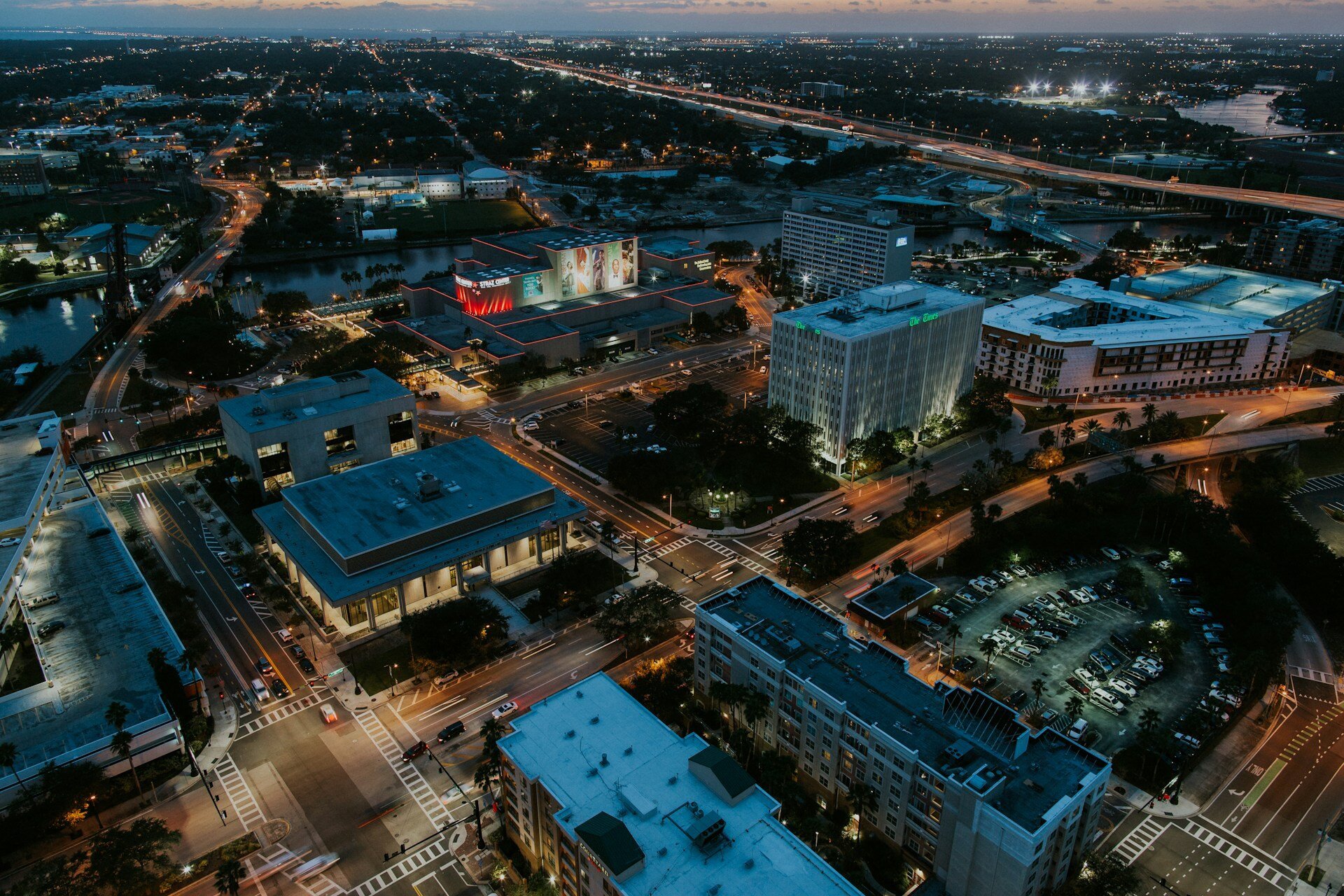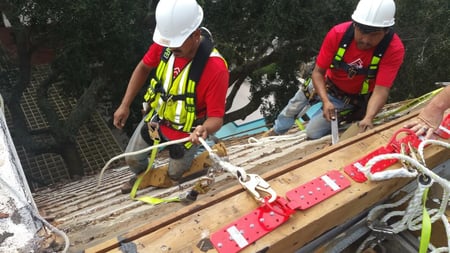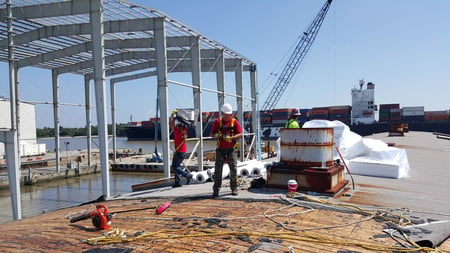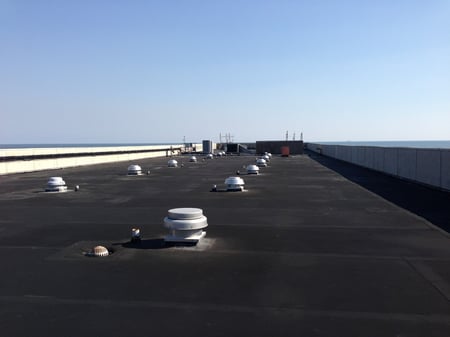
When you're responsible for a commercial building, a leaking roof can feel like your worst nightmare. The longer you let it go, the worse the damage can become, leading to costly repairs and potentially disrupting your business operations.
If your building is topped with a tar and gravel roof, you might be wondering what steps to take when a leak strikes and, more importantly, how to prevent it from happening again. At RoofCrafters, we belive that prevention is the best medicine, so it’s a good thing you’re here!
Stick around until the end of this article, where we’ll dive into the practical steps you can take to manage a tar and gravel roof leak and safeguard your roof against future problems. Let’s get started!
Understanding Tar and Gravel Roofs

First, it helps to understand what a tar and gravel roof (or built-up roofing) is. Common in commercial buildings, these roofs are built with multiple layers of waterproof material (typically tar paper) covered with hot tar and then finished with a layer of gravel.
This gravel layer acts as a shield, protecting the underlying layers from UV rays, extreme temperatures, and physical damage. But, like any roofing system, tar and gravel roofs are susceptible to wear and tear over time, especially in areas with harsh weather conditions.
Step 1: Identify the Leak

When you first notice a leak, your instinct might be to panic. Instead, take a deep breath and start by identifying where the water is coming from. This can be tricky with a tar and gravel roof since the water might be entering the roof in one spot and traveling along the layers before dripping into your building.
- Inspect the roof: Start by checking the interior of your building for signs of water damage, such as stained ceilings or walls. Then, head to the roof itself to look for obvious signs of damage.
*You’ll want to carefully walk the roof (wearing soft-soled shoes to avoid damaging the surface) and look for cracks in the tar, bald spots where gravel is missing, or any areas where the gravel is ponding or accumulating water* - Check flashings and seals: Often, leaks occur where the roof meets walls, vents, or other structures. Inspect these flashings and seals for gaps, cracks, or deterioration that could allow water to seep in.
- Look for punctures: Even small punctures in the roof membrane can lead to significant leaks. These could be caused by anything from falling branches to workers who were on the roof previously.
Step 2: Temporary Fixes

Once you've located the source of the leak, it's time to address it. In many cases, you'll need a professional roofer to provide a permanent solution, but there are temporary fixes you can apply to stop the water from causing further damage.
- Patch the leak: If you find a crack or hole in the tar, you can temporarily patch it using roofing cement. Apply the cement generously over the affected area, and then cover it with a piece of roofing fabric for added protection.
- Reapply gravel: If you notice areas where the gravel is sparse, reapply a layer of gravel to protect the underlying tar from the elements. Be sure to use clean, dry gravel that matches the existing roof material.
- Seal flashings: For leaks around flashings, you can use roofing cement or a specialized sealant to create a temporary barrier until a professional can repair the area properly.
Step 3: Call a Professional Roofer

While temporary fixes can buy you some time, they’re not a long-term solution. A leaking tar and gravel roof should be assessed and repaired by a professional roofing contractor as soon as possible. Look for a roofer who specializes in commercial roofing systems, particularly tar and gravel roofs. They’ll have the expertise to not only fix the immediate problem but also assess the overall condition of your roof and recommend preventative measures to avoid future leaks.
Preventing Future Leaks
Once your immediate leak is under control, it's time to think about how to prevent future problems. A proactive approach to roof maintenance can save you time, money, and stress in the long run.
The best way to catch potential problems before they become leaks is through regular roof inspections. Ideally, you should have your tar and gravel roof inspected at least twice a year - once in the spring and once in the fall. This allows you to catch any issues caused by seasonal weather changes.
While it’s good to keep an eye on your roof yourself, a professional inspection will be more thorough. Roofers can spot signs of wear and tear that you might miss, such as small cracks in the tar or areas where the gravel is thinning.
Also, if your area experiences a major storm, it’s a good idea to have your roof inspected afterward. High winds, hail, or heavy rain can cause damage that might not be immediately apparent.
Proper Maintenance
In addition to regular inspections, maintaining your tar and gravel roof is key to preventing leaks. Debris like leaves, branches, and dirt can accumulate on your roof, leading to blocked drains and standing water, which can degrade the roof material over time.
Regularly clear debris from your roof and ensure that all drainage systems are functioning properly. Over time, the gravel on your roof may even shift, leaving areas of the tar exposed. Periodically replenishing the gravel layer will help protect the underlying materials and extend the life of your roof.
When to Consider a Roof Replacement

If your tar and gravel roof is more than 20 years old or has experienced significant damage, it might be time to consider a full roof replacement. While this is a larger investment, it can be more cost-effective in the long run if your current roof is reaching the end of its lifespan. A new roof can also offer improved energy efficiency and better protection against leaks.
When replacing a tar and gravel roof, you might consider modern alternatives like single-ply membranes (TPO or EPDM). These materials offer excellent durability and can be easier to maintain than traditional tar and gravel roofs.
Keeping Your Tar and Gravel Roof Leak-Free for the Long Haul
A leaking tar and gravel roof is a serious issue that requires prompt attention, but with the right approach, you can manage the leak and prevent future problems.
Start by identifying the source of the leak, applying temporary fixes, and calling a professional roofer for a thorough assessment. Then, focus on regular inspections, proper maintenance, and protective measures like roof coatings to extend the life of your roof and keep your building dry and secure.
By staying proactive, you can protect your investment and avoid the headaches that come with unexpected leaks. If you’re struggling with a leaky roof, or simply interested in a good ‘ol “check-up”, be sure to hit the “Schedule an Inspection” button down below!
My name is David Toth and I am the lead estimator in North Florida with RoofCrafters Roofing. Originally from New Brunswick, I have called Florida home for the past 47 years. I enjoy cooking along with traveling to different historical areas in Florida when I have free time.



